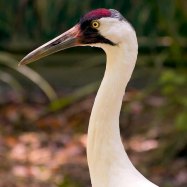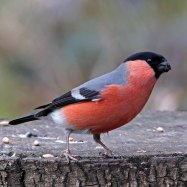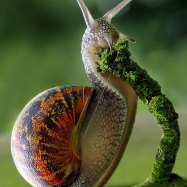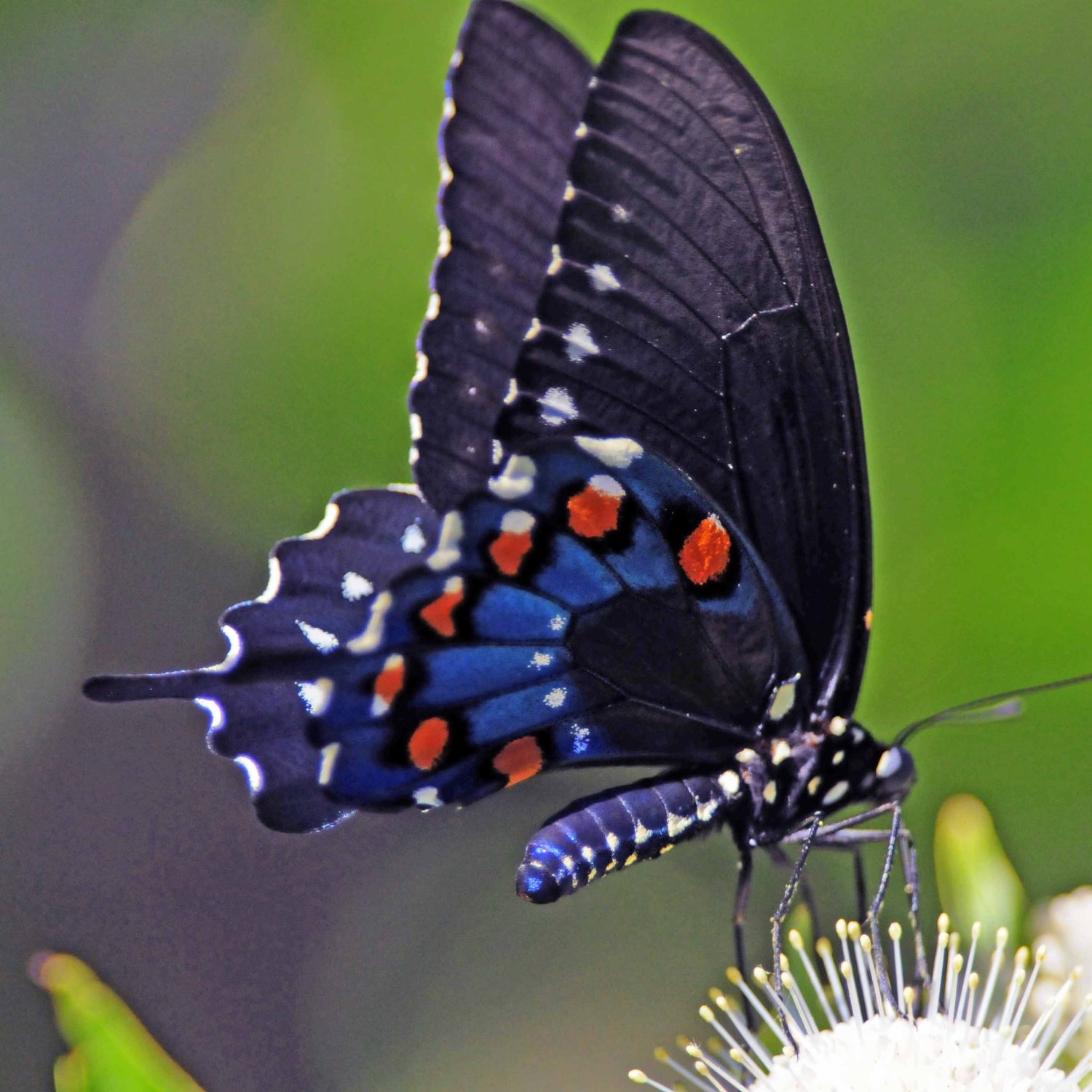
Swallowtail Butterfly
6-7 centimeters (2.4-2.8 inches)
The Swallowtail Butterfly, known for its beautiful elongated wings, can be found in various locations all over the world. With a body length of 6-7 centimeters, these large insects belong to the Papilionidae family. Keep an eye out for these fluttering creatures in gardens, meadows, and even urban areas! #SwallowtailButterfly #Papilionidae #GardenInsects
Animal Details Summary:
Common Name: Swallowtail Butterfly
Kingdom: Animalia
Habitat: Open country, meadows, gardens
The Magnificent Swallowtail Butterfly: A Master of Color and Flight
In the vast and diverse world of insects, one species stands out for its striking beauty and graceful flight. The Swallowtail Butterfly (Papilio machaon) is a sight to behold with its vibrant colors and fluttering wings. This fascinating creature is a member of the Lepidoptera order, which includes butterflies and moths. With its scientific name derived from the Greek word for "butterfly," this stunning insect truly lives up to its name Swallowtail Butterfly.The Swallowtail Butterfly is a true wonder of nature, and in this article, we will explore its unique characteristics, habitat, feeding habits, and much more. So, let us embark on a journey to discover the magic of this elegant species.
A Brief Introduction to the Swallowtail Butterfly
The Swallowtail Butterfly, also known as the Common Swallowtail, is a widely spread species found in different parts of the world. It is a member of the Papilionidae family and can be identified by its striking coloration and elongated wingspan. This delicate creature can be found in Europe, North Africa, and Asia, making it a well-known and admired species by people of all ages.Anatomy and Physical Characteristics
The Swallowtail Butterfly is undoubtedly one of the most visually appealing insects you will encounter. Its wingspan can reach up to 7 centimeters (2.8 inches), and it is considered one of the largest butterflies in Europe. The body of this butterfly is long and slender, with vibrant colors of black, yellow, and blue Skate Fish. The wings are large, elongated, and triangular, resembling the shape of a swallow's tail, hence the name "Swallowtail."The distinct coloration of this butterfly is used as a defense mechanism against predators. The black and yellow coloration can confuse and intimidate predators, making the Swallowtail Butterfly unappetizing. This phenomenon, known as aposematism, is common among butterflies, and it helps protect them in the wild.
Habitat and Distribution of the Swallowtail Butterfly
The Swallowtail Butterfly is a versatile insect that can adapt to different environments. You can find them in open country, meadows, gardens, and even urban areas. They are widespread in Europe, with the highest concentration in the UK, and can also be spotted in parts of North Africa and Asia.The Swallowtail Butterfly has also been introduced in countries like the United States, Canada, and New Zealand. This introduction is primarily to beautify gardens and parks, making this butterfly a global citizen.
Feeding Habits of the Swallowtail Butterfly
The Swallowtail Butterfly, like most butterflies, feeds on nectar. They have long and thin proboscis, a feeding tube, which they use to extract nectar from flowers. This feeding method also plays a role in pollination, as the butterfly carries pollen from one flower to another, aiding in the reproduction process.The Swallowtail Butterfly has a fondness for a specific type of flower, called milkweed. This plant is toxic to most insects, but the Swallowtail Butterfly can consume it without consequence. In fact, the toxic substances in milkweed make this butterfly less appetizing to predators.
A Fascinating Life Cycle
The life cycle of the Swallowtail Butterfly is a fascinating journey from egg to caterpillar, pupa, and finally, a beautiful butterfly. The female Swallowtail Butterfly can lay up to 100-200 eggs at once on the underside of leaves, usually near its host plant.Once the eggs hatch, the caterpillars emerge and begin their journey to adulthood. The caterpillars go through five instar stages, each time molting and growing in size. During this period, they feed on the leaves of their host plant, growing and preparing for the next stage.
After about two weeks, the fully grown caterpillar forms a chrysalis, where it will go through metamorphosis. After about two weeks, a gorgeous Swallowtail Butterfly will emerge, ready to take flight into the world.
The Swallowtail Butterfly and Humans
The Swallowtail Butterfly has been a source of wonder and inspiration for humans for centuries. Artists have depicted it in paintings and illustrations, and it has been featured in various pieces of literature. In some cultures, the butterfly is considered a symbol of change, hope, and transformation.In recent years, the Swallowtail Butterfly has become a popular subject of photography, with its striking colors and graceful flight making it a perfect muse. It has also become a tourist attraction, with butterfly spotting tours and sanctuaries dedicated to preserving and protecting this magnificent creature.
Habitat destruction and climate change have caused a decline in the population of Swallowtail Butterflies in some areas. However, conservation efforts, such as creating butterfly-friendly gardens and preserving their natural habitats, have helped in increasing their numbers.
The Role of the Swallowtail Butterfly in Nature
Aside from being a visual delight, the Swallowtail Butterfly also plays a crucial role in nature. As mentioned earlier, their feeding habits aid in pollination, which is essential for the survival of plants. They also serve as food for various predators, making them an integral part of the food chain.Additionally, the Swallowtail Butterfly is an indicator species, meaning that their presence or absence can indicate the health of an ecosystem. A decline in the population of this butterfly can be a warning sign of environmental issues that need to be addressed.
Butterflies and Natural Language Processing
The Swallowtail Butterfly, like all butterflies, has a unique wing structure that allows it to fly gracefully. This structure has inspired the field of Natural Language Processing (NLP) in the form of the butterfly optimization algorithm (BOA). This algorithm mimics the wing flapping motion of a butterfly to optimize its flight.NLP is a subset of artificial intelligence that deals with the interaction between computers and human languages. The idea behind BOA is to optimize the performance of algorithms by mimicking the flapping motion of a butterfly's wings. It has been applied in various optimization problems, such as data clustering and routing problems.
In Conclusion
The Swallowtail Butterfly is an enchanting and vital species in our ecosystem. Its beauty and elegance have inspired humans for centuries, and its role in shaping our environment cannot be understated. From its vibrant colors and graceful flight to its contribution to nature and technology, the Swallowtail Butterfly is truly a master of color and flight. So, the next time you spot one of these magnificent creatures, take a moment to appreciate their presence in our world.

Swallowtail Butterfly
Animal Details Swallowtail Butterfly - Scientific Name: Papilio machaon
- Category: Animals S
- Scientific Name: Papilio machaon
- Common Name: Swallowtail Butterfly
- Kingdom: Animalia
- Phylum: Arthropoda
- Class: Insecta
- Order: Lepidoptera
- Family: Papilionidae
- Habitat: Open country, meadows, gardens
- Feeding Method: Nectar
- Geographical Distribution: Europe, North Africa, Asia
- Country of Origin: Various countries
- Location: Various locations
- Animal Coloration: Vibrant colors, including black, yellow, and blue
- Body Shape: Large, flying insects with elongated wings
- Length: 6-7 centimeters (2.4-2.8 inches)
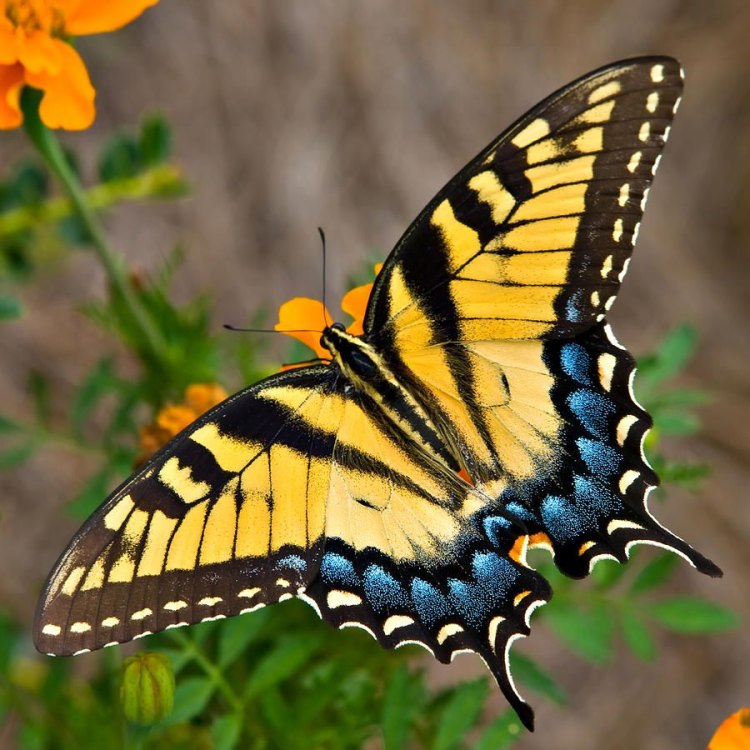
Swallowtail Butterfly
- Adult Size: Medium
- Average Lifespan: 2-4 weeks
- Reproduction: Sexual
- Reproductive Behavior: Mating occurs in mid-air
- Sound or Call: Silent
- Migration Pattern: Seasonal, migratory behavior
- Social Groups: Solitary
- Behavior: Active during the day (diurnal)
- Threats: Habitat loss, pesticide use, climate change
- Conservation Status: Varies among species, some are threatened
- Impact on Ecosystem: Pollinators
- Human Use: Attractive to gardeners and butterfly enthusiasts
- Distinctive Features: Distinctive swallowtails on hindwings
- Interesting Facts: Swallowtail butterflies are known for their colorful, elegant appearance and graceful flight patterns. They are important pollinators and are often attracted to gardens with nectar-producing flowers. These butterflies undergo a complete metamorphosis, starting as eggs, then larvae (caterpillars), pupae (chrysalis), and finally emerging as adult butterflies. Swallowtail butterflies are found in various locations around the world, and different species may have slightly different characteristics and habitats.
- Predator: Birds, lizards, spiders, and other insects
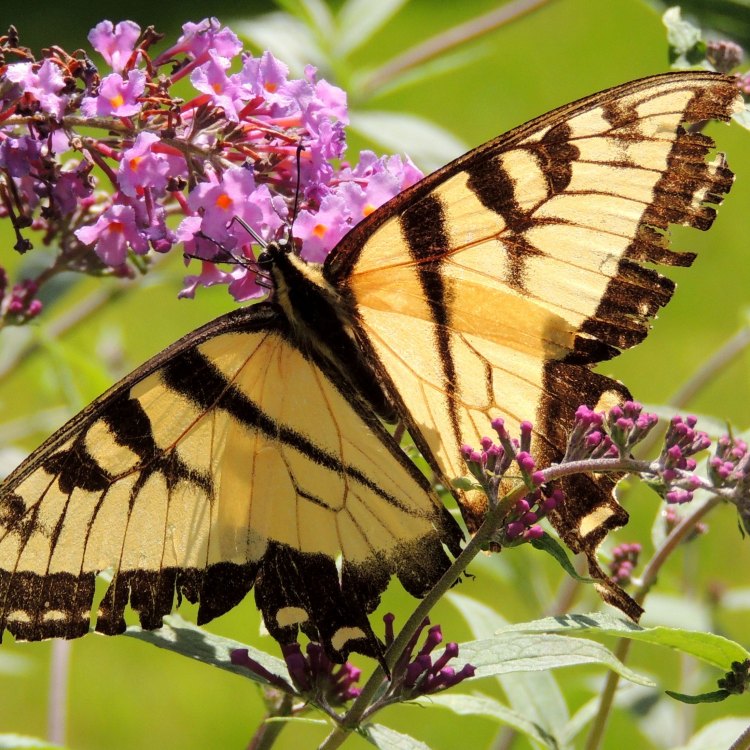
Papilio machaon
The Majestic Swallowtail Butterfly: A Symbol of Beauty, Fragility, and Resilience
Butterflies have captivated humans for centuries with their delicate and vibrant beauty, and the Swallowtail butterfly is no exception. This medium-sized butterfly is a common sight in gardens, parks, and fields, but there is much more to this winged wonder than meets the eye.As its name suggests, the Swallowtail butterfly is known for its distinctive swallow-like tails on its hindwings. This unique feature, along with its striking colors and graceful flight, makes it a sought-after subject for nature enthusiasts and artists alike PeaceOfAnimals.Com. But beyond its aesthetic appeal, this butterfly plays a vital role in our ecosystem, facing numerous threats and challenges that make its story even more fascinating.
Swallowtail butterflies are found in different parts of the world, including North and South America, Europe, Asia, and Africa. Depending on the species, the adult butterfly can range in size from medium to large, with a wingspan of up to 6 inches. Their wings are typically a combination of black and yellow, with some species displaying accents of blue, red, or white.
But, like most butterflies, the lifespan of a Swallowtail butterfly is short, lasting only about 2-4 weeks. However, within that short span of time, these butterflies go through a remarkable transformation, starting from an egg, then larvae (caterpillar), and pupa (chrysalis) stage before emerging as the adult butterfly. This process, known as complete metamorphosis, is a testament to the butterflies' adaptability and resilience.
One distinctive feature of the Swallowtail butterfly is its reproductive behavior. While most butterflies mate while perched on a flower or plant, Swallowtails are known for their unique mid-air mating dance Sockeye Salmon. The male butterfly will chase the female, who typically flies in a zigzag pattern, until she gives in and allows him to mate with her. This behavior, coupled with their striking appearance, makes them a fascinating subject to observe in their natural habitat.
Speaking of their habitat, Swallowtail butterflies are typically solitary creatures, preferring to live alone rather than in groups. They are also active during the day, making them diurnal insects. You may spot them fluttering around gardens and fields, seeking out their primary food source - nectar-producing flowers.
But these beautiful creatures are facing numerous threats that endanger their existence. Habitat loss, caused by human activities such as deforestation, urbanization, and agricultural expansion, is a leading threat to Swallowtail butterflies. As their natural habitats continue to dwindle, these butterflies have to compete for resources, making it harder for them to thrive.
Pesticide use is also a significant concern for Swallowtail butterflies, as these chemicals can be harmful to them in various ways. Pesticides can directly kill the butterflies or indirectly harm them by contaminating plants they feed on. Furthermore, climate change is causing extreme and unpredictable weather patterns, which disrupt the breeding and migration patterns of these butterflies, ultimately impacting their survival.
The International Union for Conservation of Nature (IUCN) Red List has varying conservation statuses for different species of Swallowtail butterflies, with some being listed as endangered or vulnerable. These classifications highlight the urgency to protect and preserve these beautiful insects before it's too late.
But why is it essential to protect Swallowtail butterflies? Apart from their sheer beauty and ecological value, these butterflies are important pollinators, helping to fertilize plants and maintain a healthy ecosystem. Pollinators such as butterflies and bees are responsible for one-third of the food we eat, and without them, our food supply would be greatly reduced.
Butterflies, including Swallowtails, also serve as a crucial indicator of the health of the environment. Their presence or absence can give valuable insight into the state of their surrounding ecosystems. By protecting these butterflies and their habitats, we are also safeguarding the health of our planet and its resources.
Aside from their ecological significance, Swallowtail butterflies have captured the hearts of many, including gardeners and butterfly enthusiasts. These butterflies are commonly found in gardens and parks, where they are attracted to nectar-producing flowers such as milkweed, thistles, and phlox. Gardeners can also attract them by planting specific host plants, such as parsley, dill, and fennel, which are food sources for the caterpillars.
For butterfly enthusiasts, Swallowtail butterflies are a sight to behold, with their graceful flight and striking coloring. Some even see them as symbols of transformation and hope, with their journey from humble caterpillar to magnificent butterfly. Their delicate and ephemeral existence reminds us to appreciate the beauty around us and to cherish every moment.
Despite being hunted by predators such as birds, lizards, and spiders, as well as facing threats from pesticides and climate change, Swallowtail butterflies continue to fascinate and inspire. Their resilience and ability to adapt to changing environments give us hope that they can overcome the challenges they face.
In conclusion, the Swallowtail butterfly is much more than just a beautiful insect. Their remarkable life cycle, unique reproductive behavior, and vital role in our ecosystem make them an essential part of our world. As humans, it is our responsibility to protect and preserve these fragile creatures, ensuring that future generations can also marvel at their magnificence. So the next time you spot a Swallowtail butterfly fluttering by, take a moment to appreciate their beauty and remember its importance in our world.
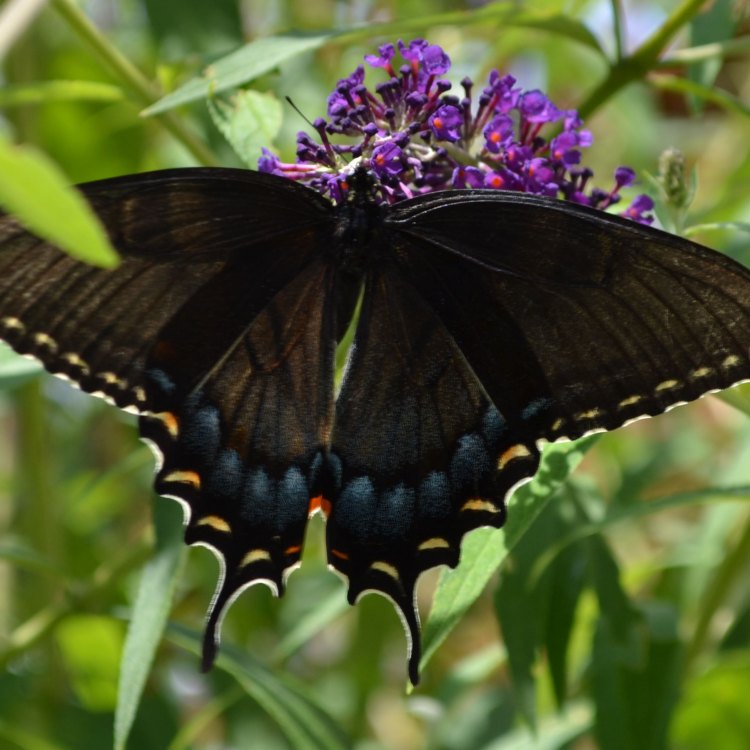
The Magnificent Swallowtail Butterfly: A Master of Color and Flight
Disclaimer: The content provided is for informational purposes only. We cannot guarantee the accuracy of the information on this page 100%. All information provided here may change without prior notice.



